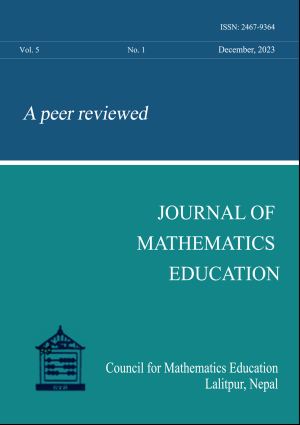Demystification of Geometrical Patterns through Cultural Activities in Bamboo/Nigalo Baskets (Doko)
DOI:
https://doi.org/10.3126/jme.v5i1.60849Keywords:
Circular helix, spiral curve, bamboo choya, toroidal spiral curveAbstract
Bamboo/ Nigalo basket (Doko) is one of the most useful tools in Nepali society. This study sought to identify the mathematical concepts, the implication of space curves, and their relations in the bamboo Doko. Both primary and secondary sources of data have been consulted in this study. Data and information were gathered from the related literature, analysis of archival documents, and observing the activities related to bamboo baskets (Doko) in the community. The descriptive method of research has been used for the analysis and interpretation of information. The patterns of bamboo choyas were analyzed emphasizing the structure and design of circular helix and toroidal spiral curves. It was observed that the circular helices are formed by bamboo choyas on the body part of the Doko and the toroidal spiral curve is formed by bamboo choya on the top of a Doko that is bid (upper edge) of a Doko. Findings of this study may help students understand the concept of the curve and help them explore more about the use of mathematics in daily life. In addition to this, the multidimensional use of space curves can help in further studies of geometrical patterns in cultural artifacts.




